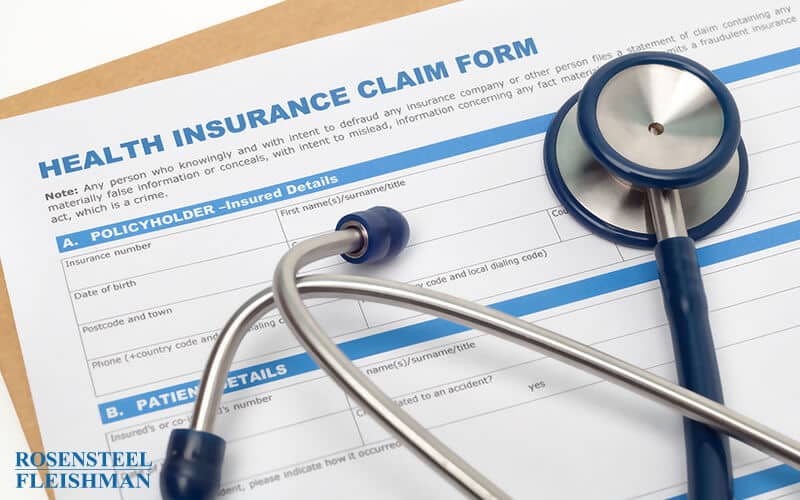Navigating the aftermath of an accident or injury is never easy. The physical pain, coupled with the emotional stress and uncertainty about the future, can leave you feeling overwhelmed and alone. But here's the thing: you're not alone. In Charlotte, NC, there are professionals who are not just seasoned in the field of personal injury […]

Nondisclosure Clauses in Medical Malpractice Settlements
Recently, a study examined the prevalence of nondisclosure clauses in medical malpractice settlement agreements involving physicians at the University of Texas and the effect of tort reform legislation on the language in those clauses. The study looked at settlement agreements before and after tort reform in Texas, spanning a time period of about ten years. Tort reform in Texas took place in 2003 and limited noneconomic damages in most medical malpractice cases to $250,000. The study found that post-tort reform settlement agreements had stricter nondisclosure provisions than pre-tort reform settlement agreements.
The study cited several legitimate reasons for including nondisclosure provisions in a medical malpractice settlement agreement. These reasons included: concern about damage to the reputation of a health care provider, concern about a settlement agreement attracting additional predatory legislation, and a belief that the medical care was not actually negligent in many cases of settlement and payment.
Of all the settlement agreements examined in the study, 88% had some nondisclosure language. 100% of those with nondisclosure language prohibited the disclosure of the dollar amount and other terms of the settlement agreement, and 60% of those with nondisclosure language prohibited the disclosure of the event of a settlement. The study author explained that these terms in a disclosure agreement protect a health care provider’s reputation and avoid attracting more lawsuits.
However, other nondislosure terms did not serve the purpose of the cited legitimate reasons for the inclusion of a nondisclosure clause. 46% of those agreements with nondisclosure language prohibited the disclosure of the underlying events and facts, and, most disturbingly, 26% of those agreements with nondisclosure language prohibited complaints to the Texas Medical Board or other regulatory bodies.
Settlement agreements from the post-tort reform period were more likely to contain all types of nondisclosure language. 72% of post-tort reform settlement agreements versus 42% of pre-tort reform settlement agreements prohibited the disclosure of the event of a settlement. 62% of post-tort reform settlement agreements versus 33% of pre-tort reform settlement agreements prohibited the disclosure of the underlying facts of the claim. And 50% of post-tort reform settlement agreements versus 7% of pre-tort reform settlement agreements prohibited the reporting of complaints to regulatory bodies.
Although courts typically void restrictions on disclosing settlement information to regulatory bodies as contrary to public policy, the study author was especially bothered by the inclusion of this type of language and advocated for the passing of state legislation which would prohibit this type of language. In response to the study, the University of Texas changed its practice regarding the prohibiting of reporting to regulatory bodies.
The study author argued that nondisclosure language prohibiting the disclosure of the underlying facts of the claim without identifying the health care provider were also hard to justify. The study author went on to argue that transparency about the errors that occur in health care organizations is important because it leads to improved medical safety. Nondislosure language which hinders this transparency obstructs the goal of improved medical safety.
North Carolina’s tort reform legislation was enacted in 2011 and is more recent than that of Texas. Therefore, there is not yet a ten-year period in which to conduct such a study. However, it is possible that tort reform in North Carolina could have a similar effect as shown in the Texas study.
Looking at North Carolina’s limit on non-economic damages of $500,000 in most cases, it is not quite as limited as that of Texas. G.S. 90-21.19(a) contains the relevant statute and states that
Except as otherwise provided in subsection (b) of this section, in any medical malpractice action in which the plaintiff is entitled to an award of noneconomic damages, the total amount of noneconomic damages for which judgment is entered against all defendants shall not exceed five hundred thousand dollars ($500,000). Judgment shall not be entered against any defendant for noneconomic damages in excess of five hundred thousand dollars ($500,000) for all claims brought by all parties arising out of the same professional services. On January 1 of every third year, beginning with January 1, 2014, the Administrative Office of the Courts shall reset the limitation on damages for noneconomic loss set forth in this subsection to be equal to five hundred thousand dollars ($500,000) times the ratio of the Consumer Price Index for November of the prior year to the Consumer Price Index for November 2011. The Administrative Office of the Courts shall inform the Revisor of Statutes of the reset limitation. The Revisor of Statutes shall publish this reset limitation as an editor's note to this section. In the event that any verdict or award of noneconomic damages stated pursuant to G.S. 90-21.19B exceeds these limits, the court shall modify the judgment as necessary to conform to the requirements of this subsection.
“Noneconomic damages” are defined by G.S. 20-19(c)(2) as “Damages to compensate for pain, suffering, emotional distress, loss of consortium, inconvenience, and any other nonpecuniary compensatory damage. "Noneconomic damages" does not include punitive damages as defined in G.S. 1D-5.”
There is an exception to this cap on noneconomic damages. G.S. 90-21.19(b) states that
Notwithstanding subsection (a) of this section, there shall be no limit on the amount of noneconomic damages for which judgment may be entered against a defendant if the trier of fact finds both of the following:
(1) The plaintiff suffered disfigurement, loss of use of part of the body, permanent injury or death.
(2) The defendant's acts or failures, which are the proximate cause of the plaintiff's injuries, were committed in reckless disregard of the rights of others, grossly negligent, fraudulent, intentional or with malice.
It will be interesting to follow the longer term effects of North Carolina’s tort reform legislation to see if they mirror those discussed in the Texas study.
If you have been injured by an act of medical malpractice, contact an attorney at Rosensteel Fleishman Car Accident & Injury Lawyers (704) 714-1450, to discuss your options.
Additional Medical Malpractice Articles
When it feels like your world has been turned upside down after an accident, finding the right support can make all the difference. It's not just about legal advice; it's about finding someone who genuinely cares about your recovery and your rights. In Charlotte, NC, the search for a medical malpractice lawyer near you or […]
Expecting a child, and the birth of that child is an exciting time for parents. Unfortunately, things can go wrong during pregnancy and birth. It is estimated that 7 out of every 1,000 babies born each year will suffer a birth injury. Depending on the injury and circumstances surrounding the injury, there may be liability […]
When you or someone close faces the distressing aftermath of an accident, understanding the next step can often be overwhelming. The maze of legal procedures, documentation, and decisions can sometimes feel as if you're trying to find your way in the dark. But what if you had a reliable guide by your side? Someone local, […]
